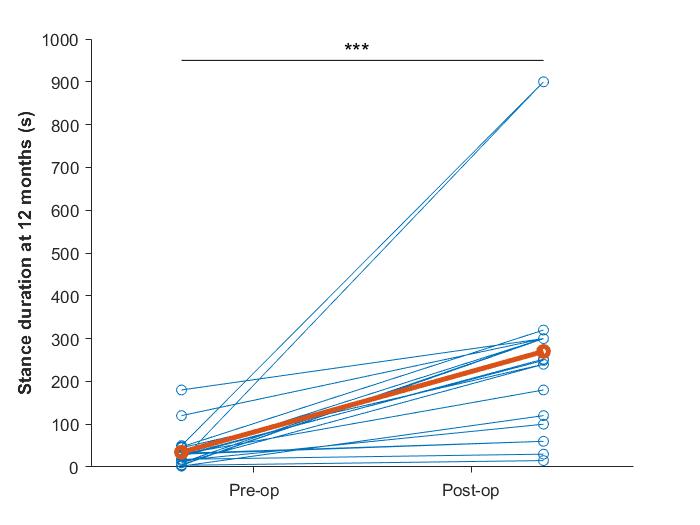Category: Tremor
Objective: We conducted a systematic review on all published outcome and safety data of orthostatic tremor patients treated with deep brain stimulation and spinal cord stimulation.
Background: Orthostatic tremor is a rare and poorly understood but highly debilitating movement disorder. First-line treatment options are pharmacological agents, including gabapentin and clonazepam. Due to a high proportion of non-responders to pharmacotherapy, surgical treatment options such as deep brain stimulation (DBS) and spinal cord stimulation (SCS) have been trialed recently.
Method: We searched Pubmed and Embase for case reports, clinical trials and systematic reviews describing orthostatic tremor patients treated with DBS or SCS. We collected all available outcome and safety data and our primary endpoint was the change in unsupported stance duration 1 year post-operatively (± 6 months) versus pre-operatively.
Results: We included 15 studies, reporting 32 orthostatic tremor patients who underwent deep brain stimulation, 4 patients who underwent spinal cord stimulation and 2 who underwent both. The ventral intermediate nucleus was targeted in 24/32 cases and the caudal zona incerta in 8/32 DBS cases. The average stance time at 1 year follow-up was 34.5 s compared to 270 s pre-operatively (p < 0.001, Wilcoxon signed rank test). Stimulation-induced side effects occurred in the majority of patients but were often transient and did not have a significant impact on quality of life. Bilateral stimulation seemed more effective than unilateral stimulation and stimulation settings were comparable to thalamic DBS for essential tremor. There were insufficient data available to draw meaningful conclusions on the long-term effects of deep brain stimulation. No conclusions could be drawn on the effects of spinal cord stimulation on orthostatic tremor due to insufficient data.
Conclusion: Deep brain stimulation of the ventralis intermedius nucleus and caudal zona incerta may be effective to increase stance time in orthostatic tremor patients in the first year, but further research is necessary to evaluate the long-term effects, the optimal target, possible predictors of outcome and the role of spinal cord stimulation.
To cite this abstract in AMA style:
A. Billet, A. Boogers, W. Vandenberghe, B. Nuttin, T. Theys, M. Mc Laughlin, P. de Vloo. Deep brain stimulation and spinal cord stimulation for orthostatic tremor: a systematic review [abstract]. Mov Disord. 2022; 37 (suppl 2). https://www.mdsabstracts.org/abstract/deep-brain-stimulation-and-spinal-cord-stimulation-for-orthostatic-tremor-a-systematic-review/. Accessed April 1, 2025.« Back to 2022 International Congress
MDS Abstracts - https://www.mdsabstracts.org/abstract/deep-brain-stimulation-and-spinal-cord-stimulation-for-orthostatic-tremor-a-systematic-review/

